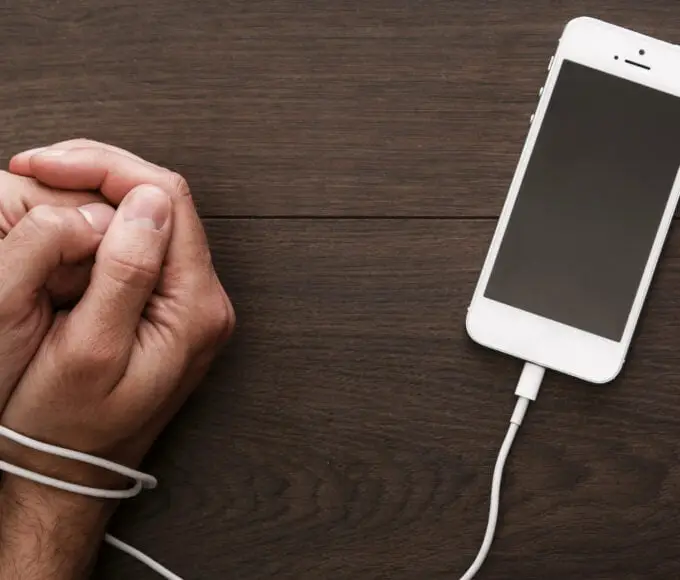Abstract: This blog post explores the phenomenon of fear of balloons, also known as balloon phobia or phobia of balloons popping. We delve into the causes, symptoms, and potential impacts of this specific phobia. Furthermore, we provide practical strategies and tips for managing and overcoming the fear of balloons. Whether you personally experience this fear or simply wish to gain a better understanding, this article aims to shed light on this unique phobia.
Fear of Balloons(Globophobia)
The fear of balloons, also referred to as balloon phobia, is a specific phobia that affects individuals of different ages. It is characterized by an intense and irrational fear of balloons or the sound of balloons popping. In this blog post, we will explore the nature of this phobia, its potential causes, and effective strategies for managing and overcoming the fear.
Understanding Balloon Phobia(Globophobia)
1.1 Definition of Balloon Phobia(Globophobia)
Balloon phobia, also known as the fear of balloons, is a specific phobia characterized by an intense and irrational fear or anxiety related to balloons or the sound of balloons popping. Individuals with this phobia experience a significant level of distress and anxiety when exposed to balloons or situations involving balloons.
1.2 Prevalence and Impact of Balloon Phobia(Globophobia)
Although specific data on the prevalence of balloon phobia is limited, it is estimated that a significant number of individuals experience this fear to some degree. Balloon phobia can affect people of all ages, from children to adults.
The impact of balloon phobia on daily life can be profound. Individuals with this phobia may avoid social gatherings, parties, or events where balloons are present. They may experience heightened anxiety and discomfort in such situations, which can lead to feelings of isolation and exclusion. Balloon phobia can also interfere with work, school, and personal relationships, causing limitations and restrictions in various aspects of life.
1.3 Symptoms and Reactions Associated with Balloon Phobia(Globophobia)
The symptoms of balloon phobia can vary from person to person, but common reactions include:
- Feeling an overwhelming sense of fear or panic when in the presence of balloons or anticipating being around them.
- Rapid heartbeat, increased sweating, and trembling or shaking.
- Shortness of breath or difficulty breathing.
- Intense anxiety or a sense of impending doom.
- Avoidance behavior, such as staying away from places or events where balloons are likely to be present.
- Experiencing a strong startle response or jumping at the sound of a balloon popping.
- Irrational thoughts and beliefs, such as fearing that the balloon will explode or harm them.
It’s important to note that these symptoms and reactions can vary in severity. Some individuals may only experience mild anxiety, while others may have more severe phobic reactions.
If you or someone you know is experiencing significant distress and impairment due to a fear of balloons, it is advisable to seek professional help from a mental health provider specializing in anxiety disorders and phobias. Effective treatments, such as exposure therapy and cognitive-behavioral therapy, can help individuals overcome their fear and regain control over their lives.
Causes of Balloon Phobia(Globophobia)
2.1 Traumatic Experiences
One possible cause of balloon phobia is the experience of a traumatic event involving balloons. This could include personal experiences or witnessing someone else experiencing a negative event related to balloons, such as a balloon popping loudly or unexpectedly. The intense fear and anxiety associated with the event can leave a lasting impression, leading to the development of balloon phobia.
2.2 Conditioning and Learned Fear
Conditioning plays a significant role in the development of phobias, including balloon phobia. If an individual has had a negative experience with balloons or a balloon-related event, it can create a strong association between balloons and fear. For example, if a person associates balloons with a loud noise, such as a balloon popping, they may develop a fear response whenever they encounter balloons or hear the sound of a balloon popping. Over time, this learned fear response can become automatic and trigger anxiety in balloon-related situations.
2.3 Genetic and Biological Factors
Research suggests that genetic and biological factors may contribute to the development of specific phobias, including balloon phobia. There may be a genetic predisposition that makes some individuals more susceptible to developing phobias. Additionally, certain brain areas involved in fear and anxiety responses, such as the amygdala, may be more reactive in individuals with phobias.
It’s important to note that while traumatic experiences, conditioning, and genetic factors may contribute to the development of balloon phobia, each individual’s experience is unique. The specific combination of factors that lead to the development of phobia can vary from person to person. Understanding the underlying causes can be helpful in developing effective treatment strategies for overcoming balloon phobia.
The Psychology Behind Balloon Phobia (Globophobia)
3.1 Anxiety and Fear Response
Anxiety and fear are natural responses that occur when we perceive a threat or danger. In the case of balloon phobia, individuals experience an exaggerated fear response when exposed to balloons or situations involving balloons. The fear response activates the body’s “fight-or-flight” system, triggering physiological changes such as increased heart rate, rapid breathing, and sweating.
3.2 Cognitive Distortions and Irrational Beliefs
Cognitive distortions and irrational beliefs play a significant role in maintaining and intensifying balloon phobia. Individuals with this phobia often have distorted thoughts and beliefs about balloons, such as catastrophizing (exaggerating the potential danger of balloons) or overgeneralizing (assuming that all balloons will pop). These cognitive distortions contribute to heightened anxiety and reinforce the fear response.
Challenging and modifying these irrational beliefs through cognitive-behavioral therapy techniques can help individuals reevaluate their thoughts and develop more balanced and realistic beliefs about balloons.
3.3 Avoidance and Safety Behaviors
Avoidance and safety behaviors are common coping mechanisms employed by individuals with balloon phobia to reduce anxiety and avoid triggering situations. They may actively avoid places or events where balloons are present or use strategies to prevent balloons from popping, such as keeping a distance or covering their ears.
While avoidance and safety behaviors may provide temporary relief, they can also perpetuate and strengthen the phobia in the long run. By avoiding situations that involve balloons, individuals miss out on opportunities to confront and overcome their fear. Over time, this avoidance can lead to increased anxiety and further reinforce the phobia.
Recognizing and gradually reducing avoidance behaviors, with the guidance of a mental health professional, is an essential step in overcoming balloon phobia. Exposure therapy, which involves gradually and systematically facing feared situations or stimuli, can help individuals develop new associations and decrease their anxiety response over time.
Common Triggers of Balloon Phobia(Globophobia)
4.1 Visual Triggers: Colors, Shapes, and Sizes
Visual triggers related to balloons can vary and contribute to the fear response in individuals with balloon phobia. Different aspects of balloons, such as their colors, shapes, and sizes, can act as triggers. For example, bright or vibrant colors may evoke anxiety, while certain shapes or sizes of balloons may intensify the fear response. The visual presence of balloons, even without any immediate threat, can cause distress and trigger phobic reactions in individuals with balloon phobia.
4.2 Auditory Triggers: Balloon Popping Sounds
The sound of a balloon popping is a common auditory trigger for individuals with balloon phobia. The sudden and loud noise can evoke intense fear and anxiety. Individuals with this phobia may have a heightened sensitivity to the sound and experience a strong startle response when they hear a balloon pop. The fear of balloon popping sounds can lead to anticipatory anxiety and avoidance of situations where balloons may pop, such as parties or events.
4.3 Environmental Triggers: Parties and Events
Parties and events where balloons are commonly present can act as environmental triggers for individuals with balloon phobia. The atmosphere of celebration and the abundance of balloons can create a sense of unease and anxiety. The fear of encountering balloons or the possibility of balloon-related situations can make it challenging for individuals with balloon phobia to participate in social gatherings or enjoy certain events. The fear of being exposed to balloons in these environments can contribute to avoidance behaviors and further reinforce the phobia.
Understanding these specific triggers associated with balloon phobia can help individuals develop strategies to manage and cope with their fear. Working with a mental health professional who specializes in anxiety disorders can provide guidance and support in gradually facing these triggers through exposure therapy and other therapeutic techniques.
Impact of Balloon Phobia(Globophobia) on Daily Life
5.1 Social and Emotional Consequences
Balloon phobia can have significant social and emotional consequences for individuals. The fear of balloons can lead to social anxiety and isolation. Individuals with balloon phobia may avoid social gatherings, parties, or events where balloons are present. This avoidance can result in missed opportunities for social interactions and the enjoyment of shared experiences. It can also lead to feelings of embarrassment or shame, as individuals may struggle to explain or justify their fear to others.
The constant fear and anxiety associated with balloon phobia can take a toll on an individual’s emotional well-being. They may experience heightened levels of stress, worry, and even depression due to the impact the phobia has on their daily life and relationships. It is essential to address the social and emotional consequences of balloon phobia to improve overall quality of life.
5.2 Limitations and Restrictions
Balloon phobia can impose limitations and restrictions on individuals’ lives. They may have to forego attending parties, celebrations, or other events where balloons are likely to be present. These limitations can affect personal relationships and activities that involve balloons, such as decorating for birthdays or participating in balloon-related games. The fear of balloons can also restrict travel, as individuals may avoid places or situations where balloons are more prevalent.
The restrictions imposed by balloon phobia can create challenges in daily life and hinder personal growth and experiences. Overcoming these limitations and finding ways to manage the fear can help individuals regain a sense of freedom and expand their opportunities.
5.3 Occupational and Educational Impacts
Balloon phobia can have implications in occupational and educational settings. Individuals with this phobia may encounter difficulties in certain job roles or industries that involve regular exposure to balloons, such as event planning, party organizing, or entertainment. Fear-related distress and anxiety can interfere with work performance and limit career choices.
Similarly, in educational settings, balloon-related activities or events may cause significant distress for students with balloon phobia. It can affect their ability to fully participate in classroom activities, attend school events, or engage in group projects involving balloons.
Addressing the occupational and educational impacts of balloon phobia may involve seeking accommodations, such as alternative assignments or modifications to the environment, as well as implementing effective strategies to manage and overcome the fear.
By recognizing and addressing the social, emotional, and practical implications of balloon phobia, individuals can take steps towards managing their fear and improving their overall well-being and quality of life.
Overcoming the Fear of Balloons(Globophobia)
6.1 Seeking Professional Help: Therapies and Treatment Options
Seeking professional help is an important step in managing and overcoming balloon phobia. Mental health professionals specializing in anxiety disorders can provide guidance, support, and evidence-based therapies tailored to individual needs. Some common therapeutic approaches for treating balloon phobia include:
- Cognitive-Behavioral Therapy (CBT): CBT helps individuals identify and challenge their irrational thoughts and beliefs about balloons. It focuses on changing negative thinking patterns and developing coping strategies to manage anxiety and phobic reactions.
- Exposure Therapy: Exposure therapy involves gradually exposing individuals to feared stimuli, such as balloons or balloon-related situations, in a controlled and supportive environment. This helps individuals confront their fears and build confidence in managing anxiety.
- Eye Movement Desensitization and Reprocessing (EMDR): EMDR is a therapy technique that can be effective in addressing trauma-related aspects of balloon phobia. It involves bilateral stimulation, such as eye movements or taps, while focusing on traumatic experiences or phobic triggers to help process and reduce distressing emotions.
- Medication: In some cases, medication may be prescribed by a healthcare professional to help manage symptoms of anxiety associated with balloon phobia. Medication can be used as part of a comprehensive treatment plan, particularly for individuals with severe anxiety symptoms.
6.2 Gradual Exposure Therapy: Facing the Fear Step by Step
Gradual exposure therapy is a specific technique commonly used to treat phobias, including balloon phobia. It involves systematically exposing individuals to the feared object or situation in a controlled and gradual manner. The exposure starts with less anxiety-provoking scenarios and gradually progresses to more challenging ones.
For example, in the case of balloon phobia, exposure therapy may begin by looking at pictures of balloons, then gradually progressing to being in the same room as balloons, and eventually touching or holding a balloon. This gradual approach helps individuals develop a sense of control and confidence in managing their fear and anxiety.
Working with a therapist experienced in exposure therapy can provide the necessary support and guidance throughout the process to ensure a safe and effective treatment experience.
6.3 Self-Help Techniques: Breathing Exercises and Relaxation Strategies
In addition to professional therapy, individuals with balloon phobia can practice self-help techniques to manage their fear and anxiety. These techniques can be used in combination with therapy or as a stand-alone approach. Some effective self-help strategies include:
- Deep Breathing Exercises: Deep breathing can help regulate and calm the body’s stress response. Taking slow, deep breaths in through the nose and out through the mouth can promote relaxation and reduce anxiety.
- Progressive Muscle Relaxation: This technique involves systematically tensing and relaxing different muscle groups in the body to release tension and induce relaxation. It can be helpful in reducing overall anxiety levels.
- Mindfulness and Meditation: Engaging in mindfulness practices and meditation can help individuals become more present and centered, allowing them to observe their thoughts and emotions without judgment. This can contribute to a sense of calm and help manage anxiety.
- Self-Care and Stress Management: Engaging in activities that promote overall well-being, such as regular exercise, healthy eating, and sufficient sleep, can have a positive impact on managing anxiety and improving mental health.
Remember, while self-help techniques can be beneficial, it is essential to consult with a mental health professional to ensure a comprehensive and tailored approach to overcoming balloon phobia. They can provide personalized guidance and support throughout the process.
Coping Strategies for Balloon Phobia(Globophobia)
7.1 Creating a Supportive Environment
Creating a supportive environment is crucial for individuals with balloon phobia. Here are some ways to foster a supportive atmosphere:
- Open Communication: Encourage open and honest communication about fears and concerns related to balloons. This helps create a safe space for individuals to express their feelings without judgment.
- Respect Boundaries: Respect the boundaries set by individuals with balloon phobia. Understand that their fear is real and valid, and avoid pressuring them to confront their fear before they are ready.
- Minimize Exposure: When planning events or gatherings, consider alternatives to balloons or reduce their presence if possible. This can help individuals feel more comfortable and included in social situations.
- Offer Support: Provide emotional support and reassurance to individuals with balloon phobia. Let them know that you understand their fear and are there to support them without judgment.
7.2 Building Resilience: Positive Affirmations and Self-Care
Building resilience is essential for managing balloon phobia. Here are strategies to foster resilience:
- Positive Affirmations: Encourage individuals to practice positive self-talk and affirmations. Remind them of their strengths and abilities to overcome their fear.
- Self-Care: Promote self-care practices, such as engaging in activities that bring joy and relaxation. Encourage individuals to prioritize their well-being and engage in activities that help them manage stress.
- Stress Management Techniques: Teach stress management techniques like deep breathing, mindfulness, or engaging in hobbies or activities that promote relaxation and stress reduction.
- Gradual Exposure: Support individuals in their journey of gradually facing their fear. Offer encouragement and celebrate their progress, no matter how small.
7.3 Educating Others: Raising Awareness and Understanding
Raising awareness and understanding about balloon phobia can help create a more empathetic and inclusive society. Here are ways to educate others:
- Share Information: Educate friends, family, and colleagues about balloon phobia. Explain the nature of the fear, its impact, and how they can support individuals experiencing it.
- Challenge Stereotypes: Address misconceptions or stereotypes about phobias. Emphasize that fears and anxieties are valid and that everyone’s experiences should be respected.
- Encourage Empathy: Foster empathy by encouraging others to imagine themselves in the shoes of someone with balloon phobia. This can help create understanding and compassion.
- Support Advocacy Efforts: Support organizations or initiatives that raise awareness and advocate for individuals with phobias. This can help create broader societal change and reduce stigma.
By creating a supportive environment, building resilience, and educating others, we can foster a more compassionate and inclusive society for individuals with balloon phobia.
Conclusion
Fear of balloons, or balloon phobia, can significantly impact individuals’ lives, causing distress and limiting their activities. However, with the right strategies and support, it is possible to manage and overcome this fear. Whether you experience this phobia yourself or know someone who does, the information provided in this blog post can serve as a valuable resource for understanding and addressing balloon phobia.
Glossary
- Balloon Phobia: Also known as fear of balloons, it is an intense and irrational fear of balloons or the sound of balloons popping.
- Conditioning: The process of learning through associations, where an individual forms a connection between a particular stimulus and a specific response.
- Cognitive Distortions: Distorted or irrational thinking patterns that contribute to anxiety or phobic reactions.
- Gradual Exposure Therapy: A therapeutic technique used to treat phobias, involving gradually exposing individuals to feared stimuli or situations in a controlled and supportive manner.
Last worded from Author
Remember, overcoming the fear of balloons is a journey that requires patience, support, and determination. With the right strategies and a willingness to face your fear, you can gradually regain control and enjoy a life free from the constraints of balloon phobia. Embrace the challenge and take the first step towards conquering your fear of balloons. You’ve got this!
FAQs
The fear of balloons is commonly referred to as balloon phobia or fear of balloons.
Symptoms of balloon phobia may include intense anxiety or panic when in the presence of balloons, excessive fear of balloons popping, rapid heartbeat, sweating, trembling, avoidance of situations involving balloons, and a strong desire to escape or seek safety.
Yes, balloon phobia can be overcome with the right strategies and support. Techniques such as gradual exposure therapy, cognitive-behavioral therapy, and self-help techniques can help individuals manage and overcome their fear of balloons.
Balloon phobia can be caused by various factors, including traumatic experiences involving balloons, conditioning and learned fear, as well as genetic and biological factors. Each person’s experience with balloon phobia may have unique underlying causes.
Balloon phobia can have significant impacts on daily life. It may lead to social and emotional consequences, limiting social interactions or participation in events involving balloons. Balloon phobia can also affect occupational and educational opportunities, as individuals may avoid situations where balloons are present.
It is advisable to seek professional help for balloon phobia if the fear significantly interferes with daily life, causes excessive distress or anxiety, or if attempts to manage the fear independently have been unsuccessful. A mental health professional experienced in phobia treatment can provide guidance and appropriate therapies.
Also Read







